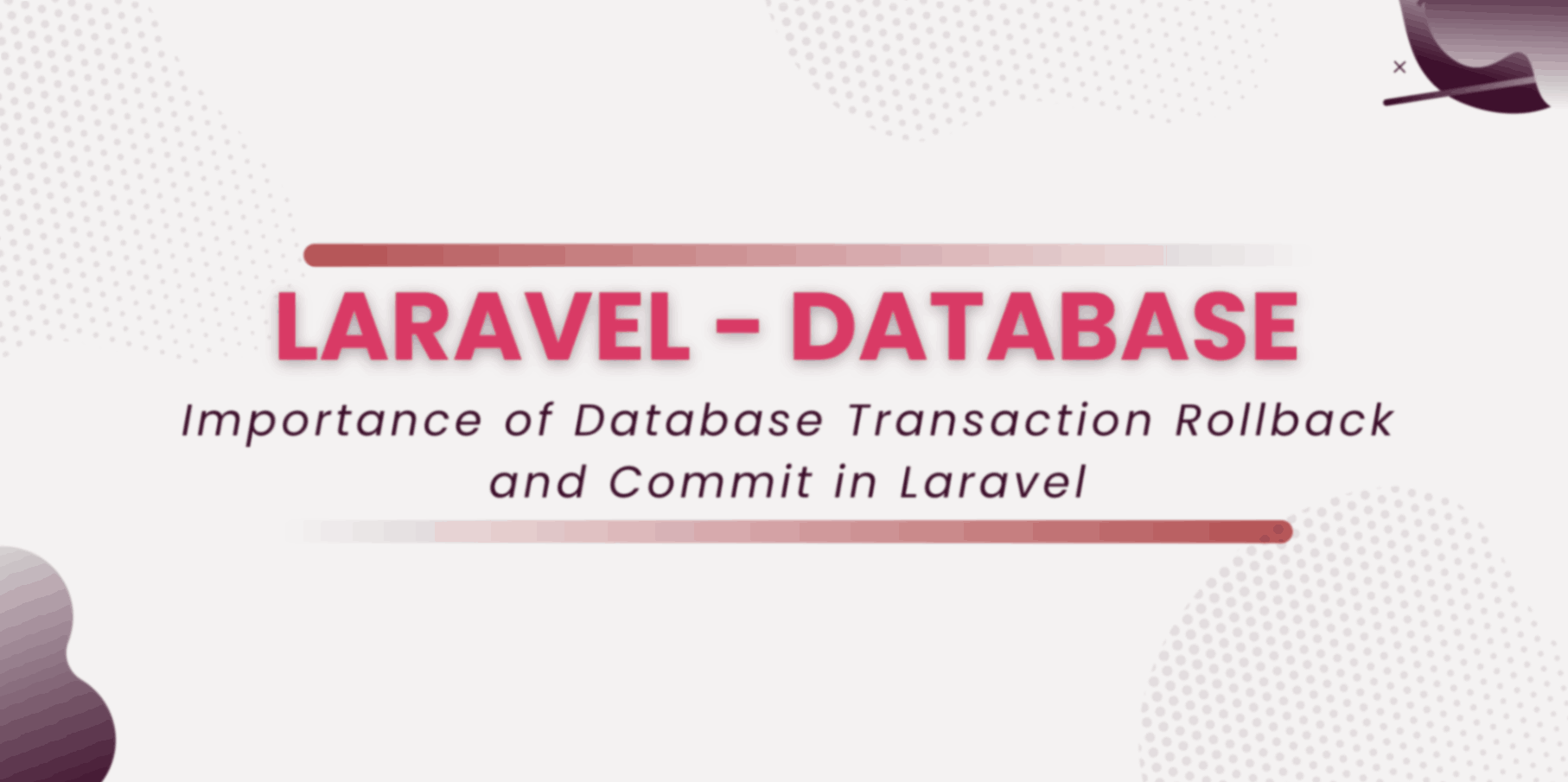Avoid Junk Data That Generated Due To Errors – Laravel Database
Certainly! Let’s dive into the importance of database transaction rollback and commit in the context of Laravel, along with a practical example. Importance of Database Transaction Rollback and Commit in Laravel Understanding Database Transactions In Laravel, database transactions ensure that a series of database operations are performed atomically. This means that either all changes are […]

Certainly! Let's dive into the importance of database transaction rollback and commit in the context of Laravel, along with a practical example.
Importance of Database Transaction Rollback and Commit in Laravel
Understanding Database Transactions
In Laravel, database transactions ensure that a series of database operations are performed atomically. This means that either all changes are applied entirely, or none of them take effect. If an error occurs during any part of the transaction, all changes made up to that point are rolled back, maintaining the database's consistency.
Example: Processing a Payment Transaction
Let's consider an e-commerce website built with Laravel. When a user makes a payment, we need to perform the following steps:
- Create a new order: We create an order record in the database.
- Deduct product quantity from inventory: We reduce the product quantity after a successful purchase.
- Record the payment transaction: We log the payment details.
Here's how you can implement this using Laravel's database transactions:
use Illuminate\Support\Facades\DB;
use App\Models\Order;
use App\Models\Product;
use App\Models\Transaction;
DB::beginTransaction();
try {
// Step 1: Create a new order
$order = new Order();
$order->user_id = auth()->user()->id;
$order->total_amount = $cart->getTotalAmount();
$order->save();
// Step 2: Deduct product quantity from inventory
foreach ($cart->items as $item) {
$product = Product::find($item['product_id']);
$product->quantity -= $item['quantity'];
$product->save();
}
// Step 3: Record the payment transaction
$transaction = new Transaction();
$transaction->order_id = $order->id;
$transaction->amount = $order->total_amount;
$transaction->save();
DB::commit(); // All database operations are successful, commit the transaction
} catch (Exception $e) {
DB::rollBack(); // Something went wrong, roll back the transaction
}In this example, we use Laravel's beginTransaction(), commit(), and rollBack() methods to ensure data integrity. If any exception occurs during the payment process, the entire transaction is rolled back, preventing inconsistencies in the database.
Conclusion
Laravel's database transactions are essential for maintaining data consistency, especially during critical operations like payment processing. Always conclude open transactions with either a commit or a rollback action to ensure the integrity of your database.
Remember, keeping your database consistent is crucial for a reliable web application! 😊




![How to Fix: “SQLSTATE[42000]: Specified key was too long; max key length is 1000 bytes” in Laravel Migration (MySQL)](https://ghanshyamashra.online/wp-content/uploads/2025/04/learn-to-fix-specified-key-was-too-long-mysql-laravell0SQLSTATE42000-1071-300x300.jpg)
